Did you know that Monarch Butterflies migrate all the way to central Mexico? The Monarch Butterfly’s life cycle and annual migration has provided me wonder since my childhood, for our own children as well as my elementary students over the years. Thanks to Aunt Carol Jean’s butterfly tent we have been able to observe Monarchs closely! Join my husband, Chuck, and I as we investigate one Michigan location where clusters of Monarchs make a stop along their route. Peninsula Point Lighthouse in the Stonington peninsula (along Lake Michigan’s northern shore) was our destination. Join us on our search for Monarchs!
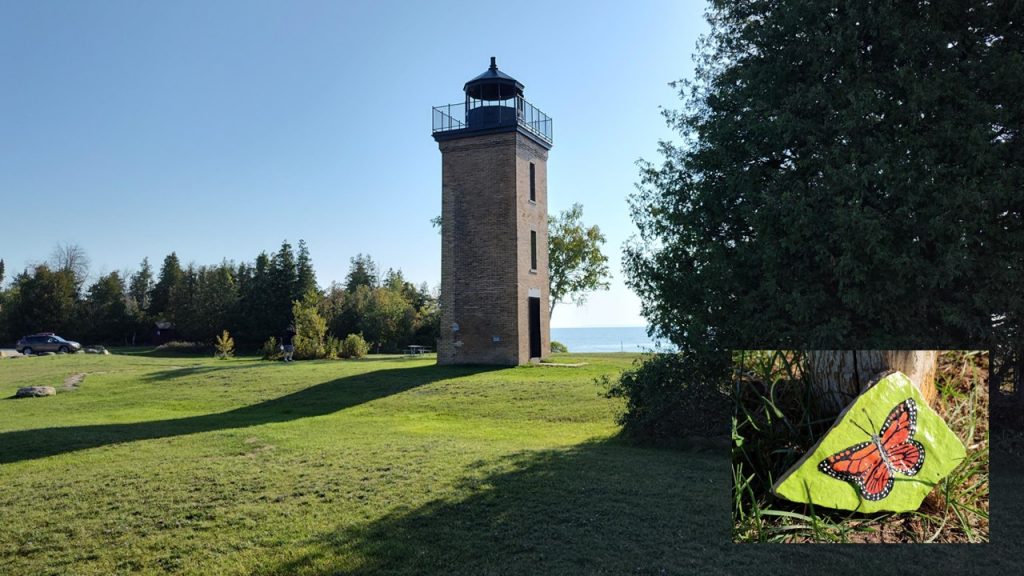
Carrying hope of spying fluttering butterflies, I hopped out of the Jeep and headed for the cedar trees at the point on the Stonington Peninsula. One lone Monarch flitted passed me. I followed the creature with my eyes, not wanting to make a sudden movement which may frighten it. The insect wasn’t interested in me at all. It flew to a branch of a tree. My eyes widened wishing I’d see a tree full of fluttering wings!
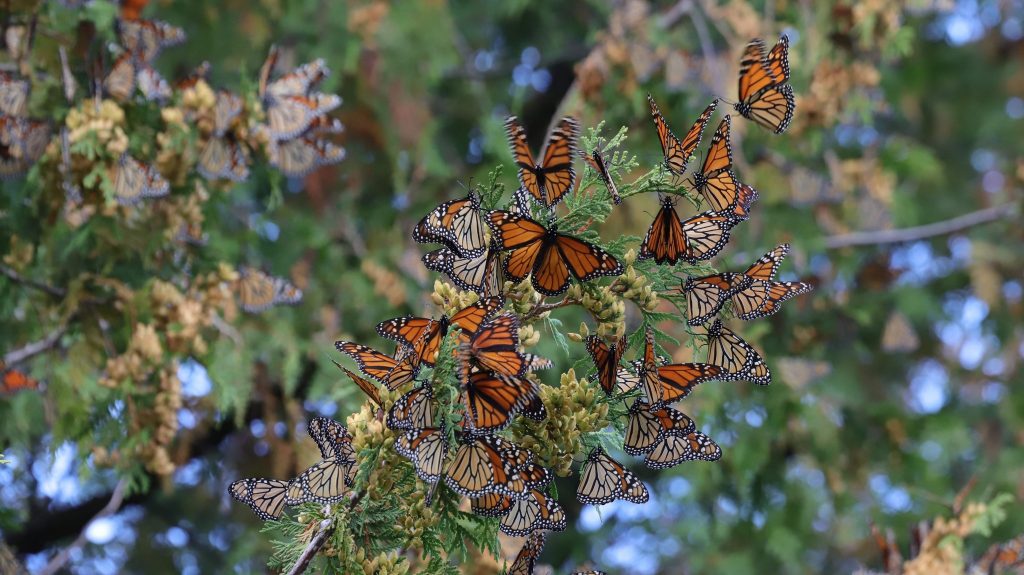
A group of butterflies is called a ‘roost’ or a ‘bivouac.’
Photo Credit: Visit Escanaba Facebook Page
Lake Michigan splashed waves along the shore as I searched other cedar trees for butterflies. We only spied a few fluttering. “Ya know, there was a wind from the north a few days ago.” Chuck’s lips pursed sideways. “I bet we just missed them. They’ve already left.”
How do the butterflies know their way to Mexico or even to their overnight stays along the way? After all, these newly emerged creatures are four or five generations removed from their ancestors who’d made the trek before. I marveled at these tiny animals and the long haul they have before them!
Complete Metamorphosis
First, one should gain awareness for the Monarch’s amazing metamorphosis. This is a miracle upon itself! Only 2%-10% of the eggs that had been laid survive in the wild and become adult butterflies!
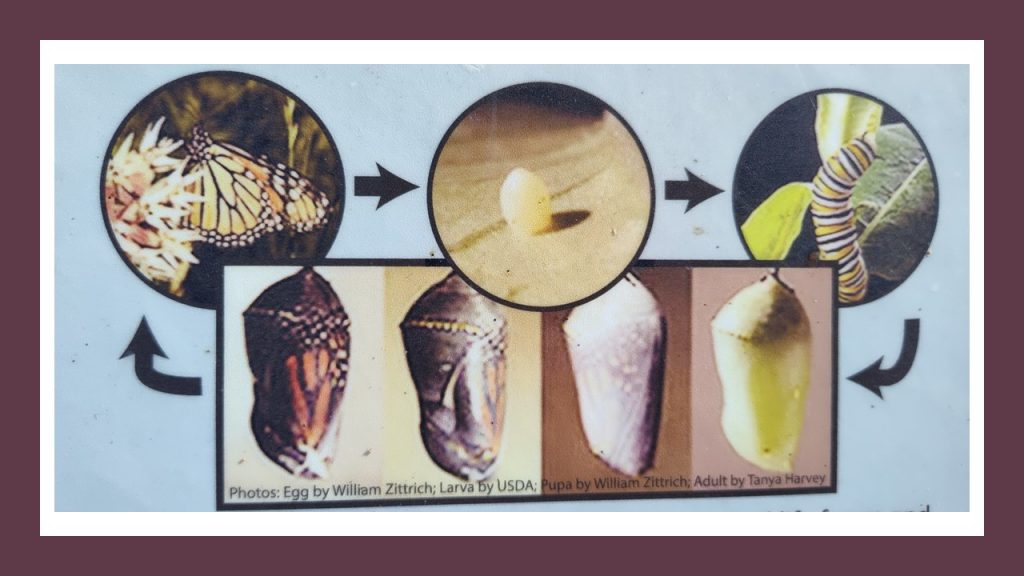
Adult females lay a single tiny egg on the underside of a milkweed plant. The egg will hatch after only 4 days if it has survived predators: spiders and ants.
The tiny caterpillar begins munching on the milkweed and grows quickly. One caterpillar (larvae) will eat 20 or more milkweed leaves during their 18 day larvae stage. For most animals milkweed is toxic, which helps to protect the tiny caterpillars from many predators. Yet it’s the only plant that can nourish the monarch larvae.
The caterpillar, now 200 times larger than when it had hatched, climbs to a high spot, attaches itself upside down and builds a silk cocoon around itself. At first the chrysalis is bright green with a ridge of gold dots along the top. Over the next 9-14 days the coating becomes translucent. (pictured above)
As the butterfly emerges, it unfolds its damp wings. Within a day the butterfly is ready to fly. The typical lifespan is only 2 – 6 weeks. For most of the generations the Monarch’s main job is to make acquaintances and reproduce.
The Monarch’s Amazing Migration
However, in early fall there’s a super generation which had been deemed to migrate to Mexico. This group survives eight times longer than previous generations. The migrating generation will fly up to 2,500 miles so they’ll spend the winter months in the warmth of central Mexico.
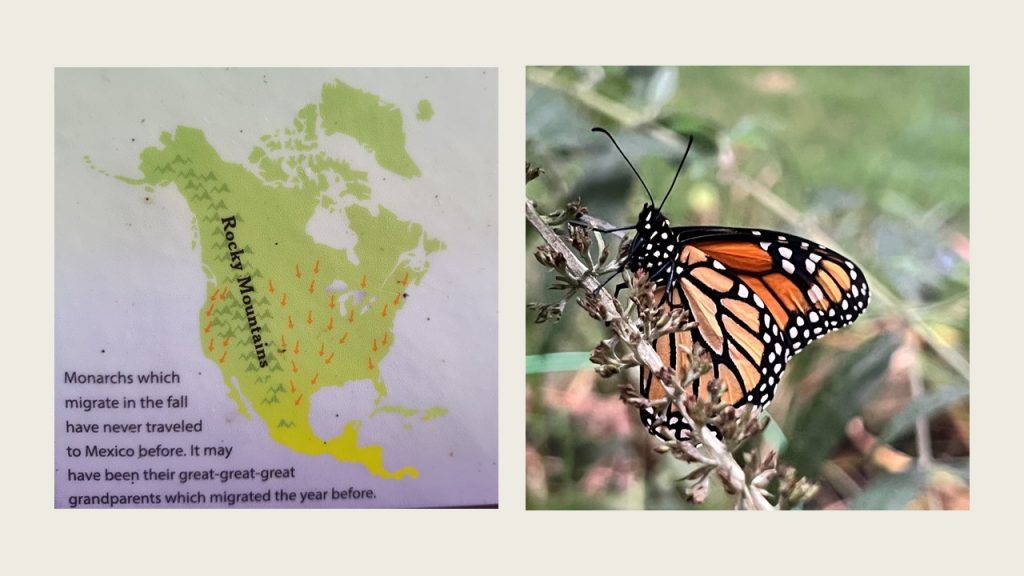
Photo Credits: (left) Peninsula Point Lighthouse / (right) Chantal Hoey-Sanders
At night the roosts of butterflies cluster on trees at stopping points along the way. Peninsula Point Lighthouse is one of the typical resting spots. How do they know where to meet? I am baffled!
When March arrives, these Monarchs begin their trek north. As they travel, eggs are laid on milkweed. When the next generation emerges, they continue their migration northward.
Tagging Monarchs At Peninsula Point
The U.S. Forest Service Rapid River/Manistique Ranger Office heads up volunteers who begin counting Monarch eggs and larvae on May 1st. “The Monarch Project” at Peninsula Point Lighthouse has been surveying and recording Monarch information since 1993. Data is collected at each stage of this unique insect’s life cycle.
Tom Desy, retired from the U.S. Forest Service who now serves on The Monarch Project, had been interviewed about tagging the Monarchs. “I’d been here 22 years or 23 years. Word got out that there were butterflies down here. So I came down here.” He walked along the Stonington Peninsula near the Peninsula Point Lighthouse.
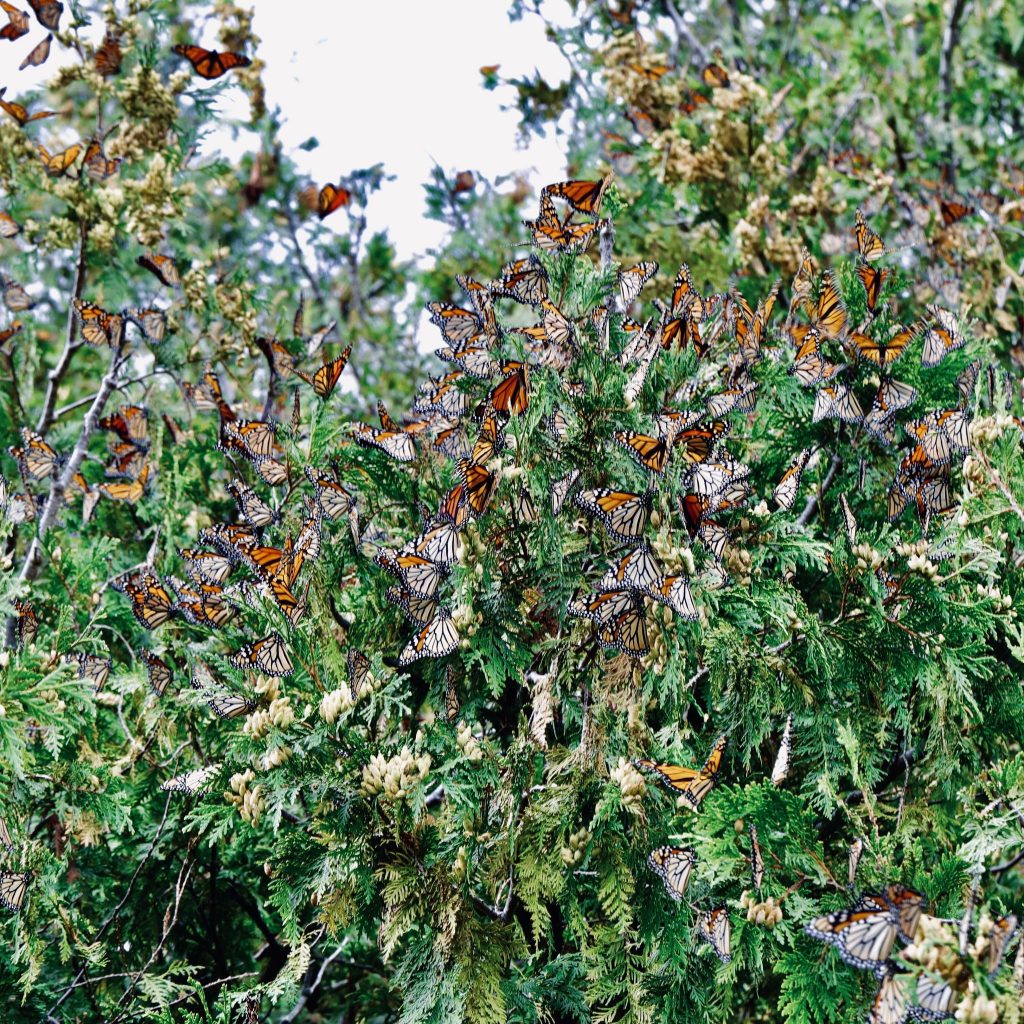
Tom continued, “I estimated that there were 8-10 thousand (Monarchs) here. It was probably one of the most incredible things I’ve ever seen. The trees were just coated with them. It looked like ornaments on Christmas trees. It wasn’t just one or two, but whole limbs were sagging.”
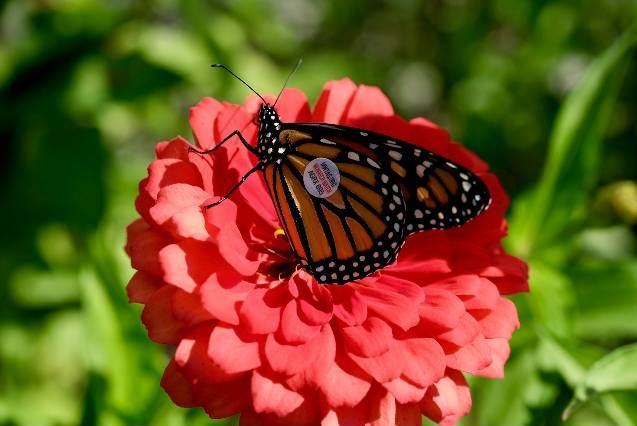
Tom explained the tagging process. Volunteers come down early in the morning when the butterflies are easier to catch. Monarchs become active when the sun warms them up. Being ever so gentle a volunteer will check if the butterfly is male or female by opening the wings. Males have two symmetrical large black dots along the black vein on their bottom wings, while females do not have these markings.
Next the individual will place a numbered sticker on the underside of the hind wing. Next, the volunteer records the tag number, time it had been placed as well as male or female designation. This data is put in the hands of The Monarch Project. Since 1993 at least 21 tagged Monarchs from the Stonington Peninsula have been found in Mexico.
What Can I Do To Help Monarchs?
There are many factors which have caused a sharp decline in the Monarch population. Fall is the perfect time to plant milkweed seeds from the seed pods. Accompany the area with a variety of nectar-rich flowers that will bloom throughout the spring, summer and fall. Now you have a butterfly garden!
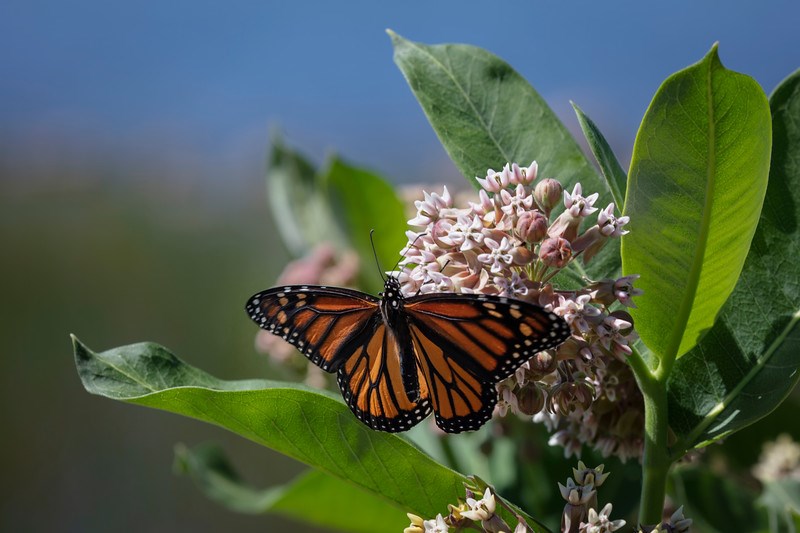
Photo Credit: National Park Service
Monarchs Are Amazing!
I plan to return to the Stonington Peninsula next fall and camp nearby, so I can check daily for the these amazing Monarchs. One can even sign up as a volunteer to assist in tagging these unique insects. The phone number is included below under “Resources.” What an adventure that would be!
In the meantime, I’m about to plant milkweed seeds along our backyard fence where I have irises, lillies, zinnia, sunflowers and goldenrod. Several of my friends have done the same.
In addition this past summer my friends, Chantal and Sharon, have each taken time to nurture Monarchs through their life cycles. With netted tents, the caterpillars were safe to eat, hang in their chrysalises and emerge as adult butterflies. Many more Monarchs have safely emerged and have been released!

Resources:
Visit Escanaba Facebook Page
Visit Escanaba website You can volunteer for tagging efforts by calling (906) 474-6442 ext 140.
Chantal Hoey-Sanders
Sharon MacDermaid
The University of Maine website






One thought on “Monarch Migration – Peninsula Point”
Thanks for the info on this post, Marty. Didn’t know we had such a place in Michigan.